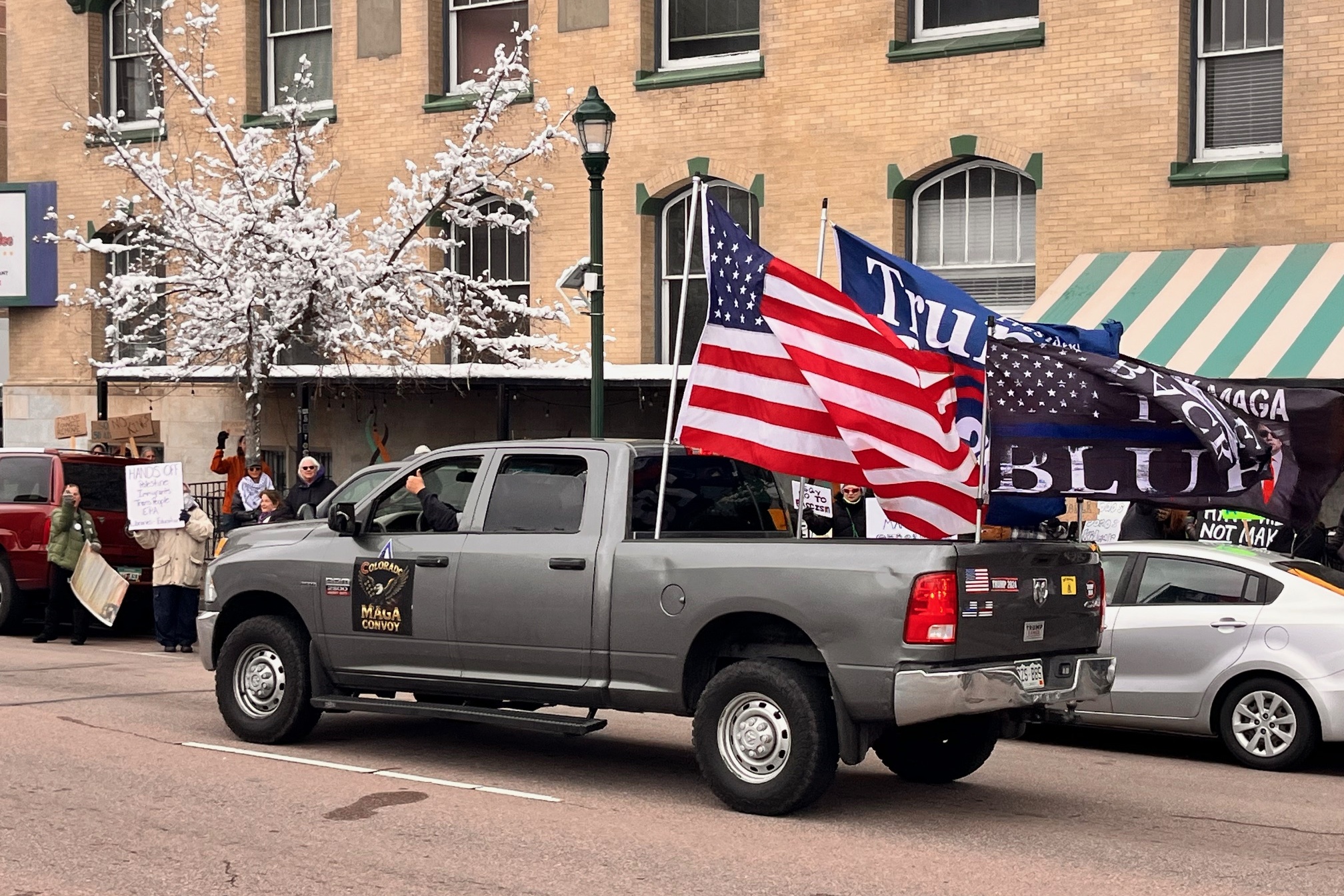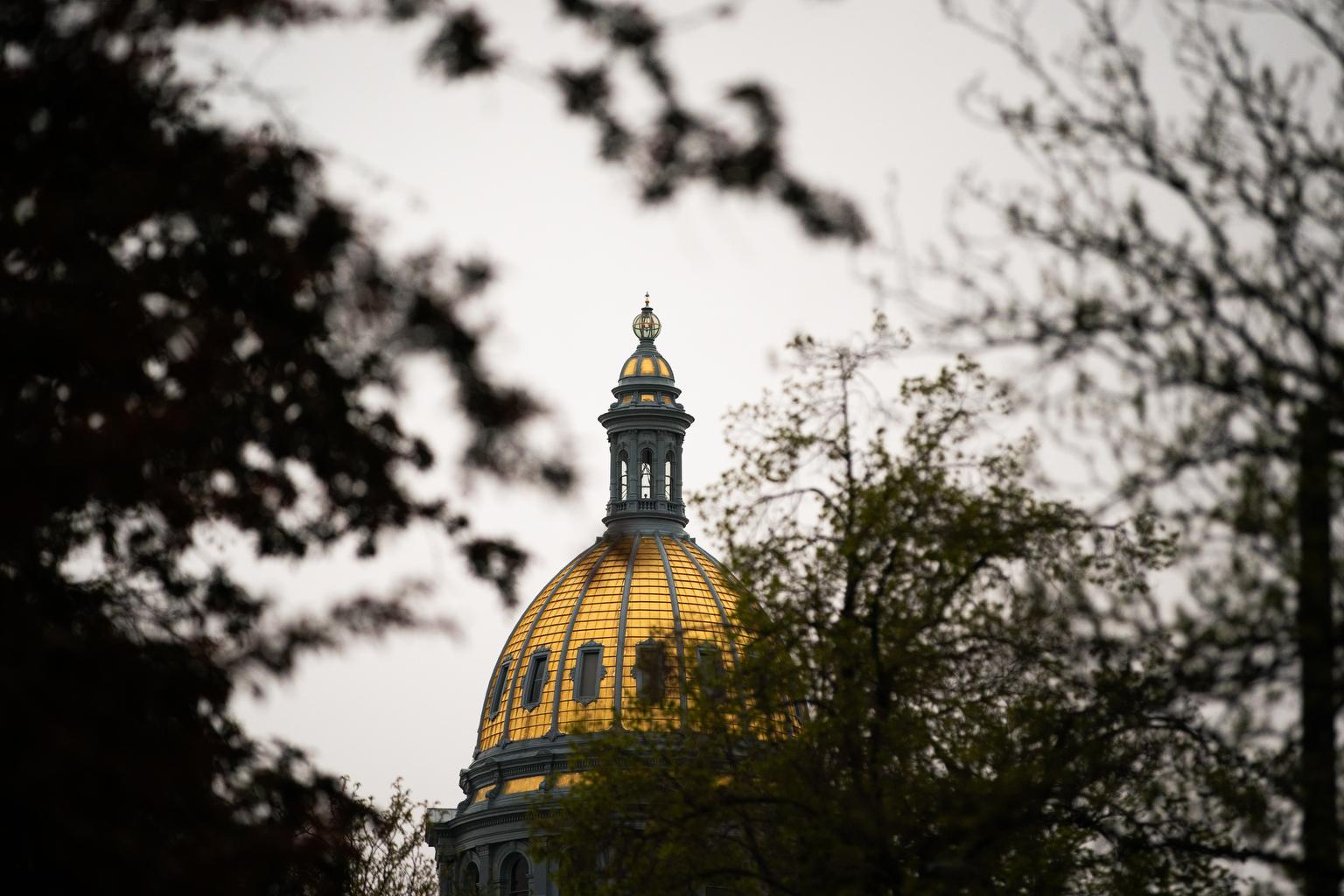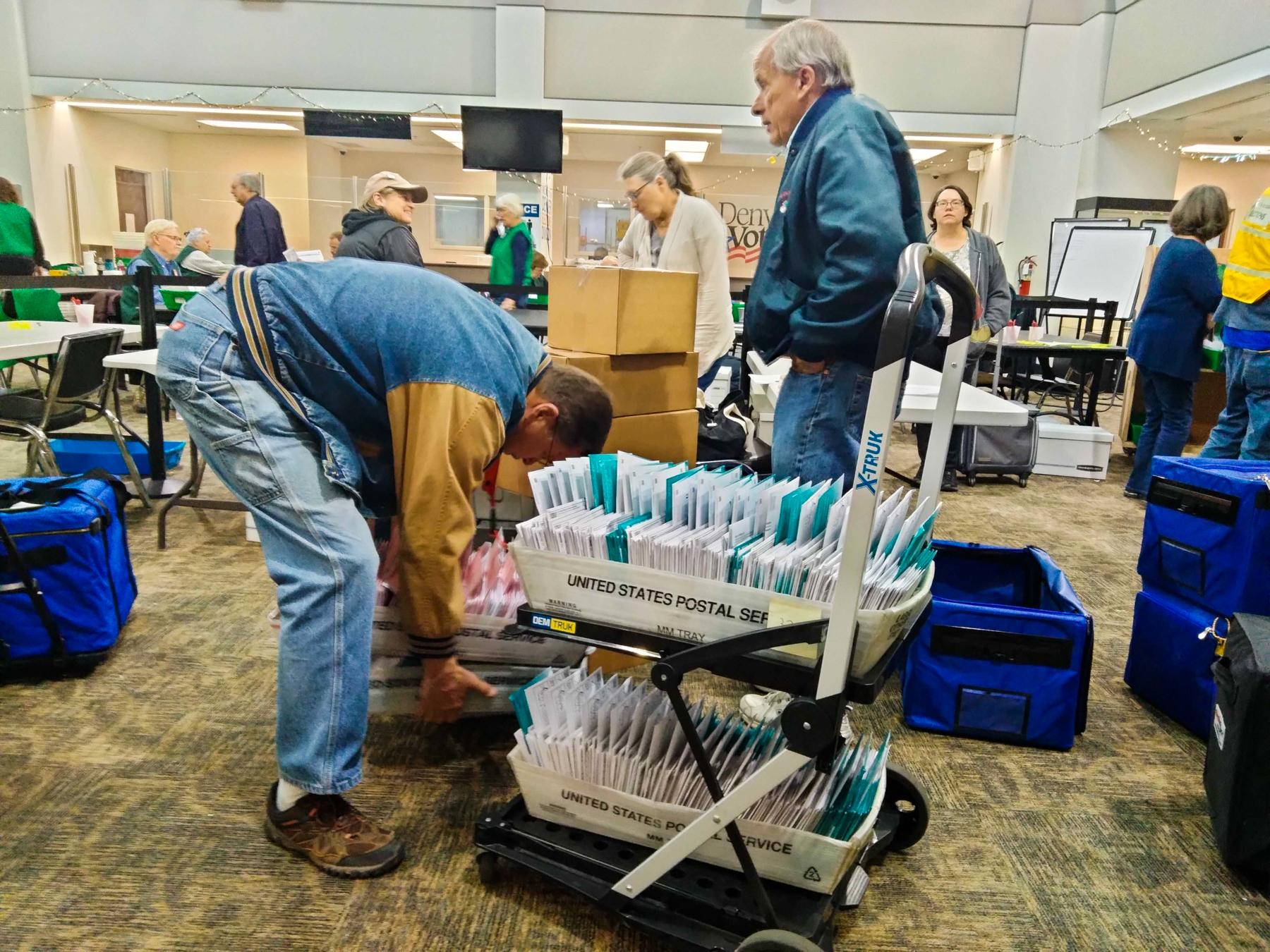
Elizabeth Littlepage’s eyes widened as she unzipped the blue duffle bag in front of her. Inside sat a tray of hundreds of Denver County ballot envelopes. It was the morning after election night, and these votes had yet to be counted.
That’s because they’d been left in drop boxes in Adams County — either by mistake or on purpose. Now, Dave Penney, an election administration worker from Adams, was delivering them to their final destination in Denver.
“Oh, I love it,” said Littlepage, a personnel administrator for the Denver Elections Division. “Thank you. Now you get yours.”
She turned to a metal cart and pulled off a tray of about 300 Adams County ballot envelopes that voters had returned to Denver boxes. She slid it across a table toward Penney.
“Great,” Penney said. “Is Arapahoe, Jefferson going to be here?”
“Yep, they’re on their way,” Littlepage said.
The exchange was part of a quaint — even heartening — tradition in Colorado’s elections, especially when juxtaposed against the current polarized political climate and threats to election security. It’s called a ballot swap.
Each election, thousands of Colorado voters drop their mail-in ballots into drop boxes in the wrong county. And those ballots need to make it to their proper home.
At the swaps, county election workers meet in-person to trade carts of miscast ballots. The exchanges can number from a handful of ballots to more than 1,000 between large, neighboring metro counties where drop boxes are often located near borders.
Workers say swaps are an important part of making sure every envelope gets to its correct destination—especially since counties can only process their own ballots and many races have narrow margins.
As of Wednesday afternoon, several races, including Colorado’s 3rd congressional district, remained without a winner due to outstanding ballots.
The meet ups require bipartisan teams of election workers to hand-deliver ballots to neighboring counties. Ballots for counties that are too far to drive between get overnighted through FedEx.
The exact number of exchanges varies between elections. At a swap on Wednesday inside the lobby of Denver’s elections headquarters, thousands of uncounted ballots exchanged hands between seven Front Range counties from Denver to as far north as Weld.
“We want to make sure that no matter where you dropped your ballot, it gets to the right place,” said Lucille Wenegieme, a strategic advisor for Denver’s elections office. “It’s all a part of the greater tallying of votes that happens every election.”
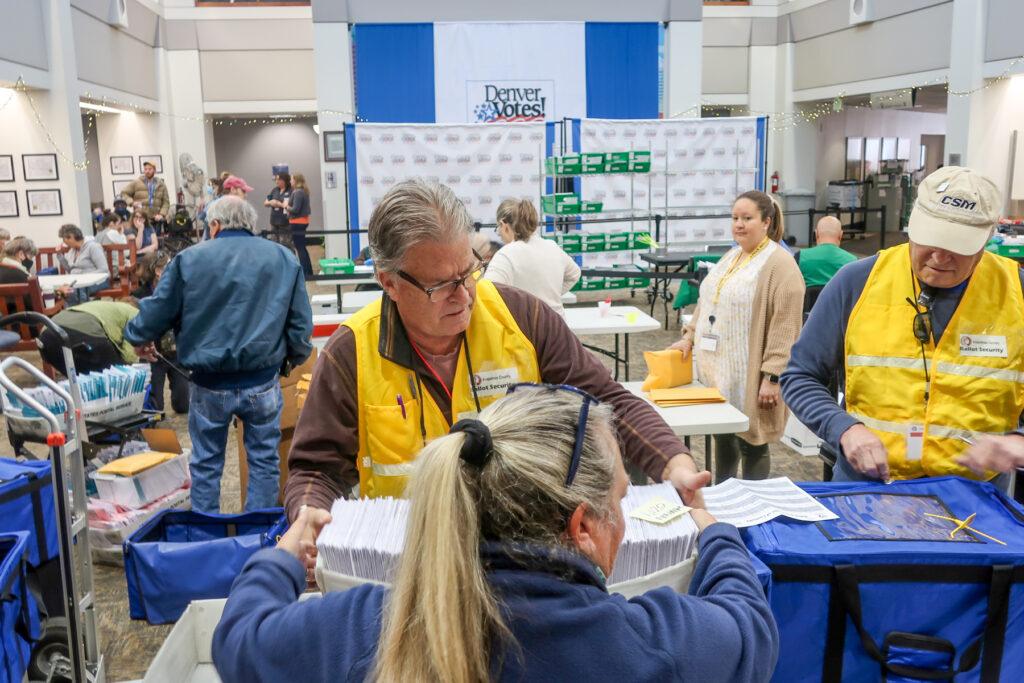
Swaps have been taking place since at least 2013, when Colorado transitioned to a predominantly mail-in election system. And they’ve grown more necessary as the number of drop boxes across the state has increased, Wenegieme said.
This year Colorado had 411 ballot drop boxes across the state— the largest number ever.
“That's the Colorado model,” Wenegieme said. “We wanna make sure that voters have every option. If you're on vacation or you're on a work trip, we wanna make sure that you can still participate.”
Officials say while ballots cast in wrong counties are a small percentage of total turnout, the increased need for the exchanges can cause delays in counting.
The swaps are just one part of ballot processing that extends past election day.
Regular signature verification and tabulation of paper ballots can last for days after an election, leading to long waits for some race results.
On top of ballot swaps, voters have eight days to “cure” ballots with signature verification issues. Some ballots with physical damage, such as tears or stains, are also eligible to be cured.
County elections offices will kickstart the process by reaching out to voters via text, phone or mail. If voters don’t respond, their ballot will not be counted.
Ballots eligible for curing typically make up a small percentage of total turnout. In many counties, less than 2 percent of envelopes trigger a cure letter.
Military and overseas ballots can also be counted if they were postmarked by 7 p.m. on election day.
“Everybody thinks that election day is it and it’s done. It’s not here in Colorado,” said Matt Crane, executive director of the Colorado County Clerks Association. “In razor thin elections, it could be a while until we truly have clarity in terms of who wins and who loses.”
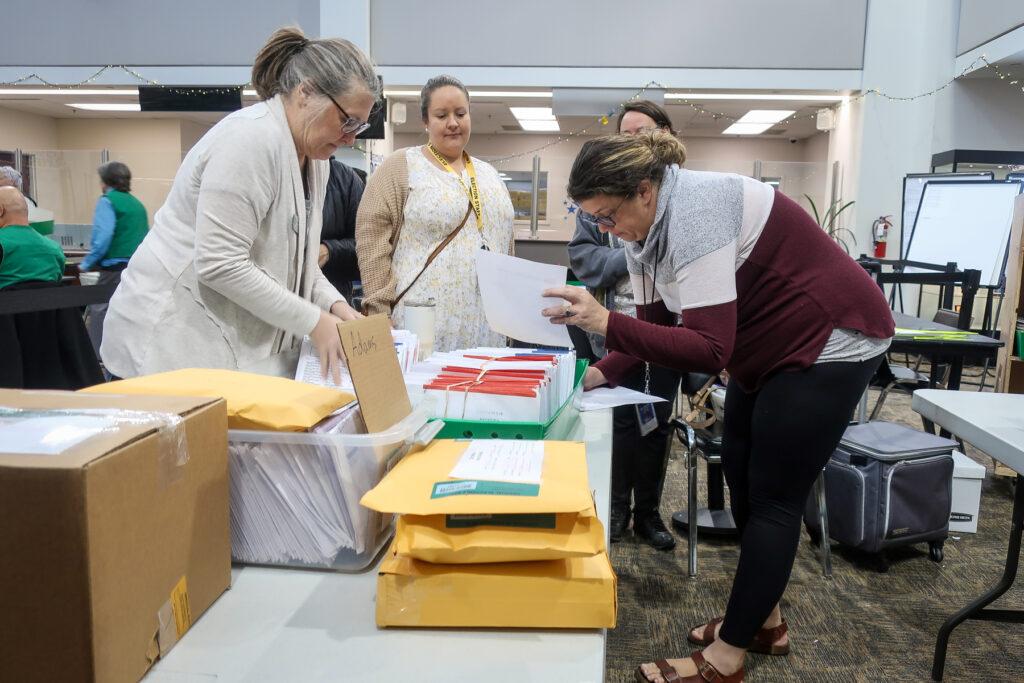
Ballots received during swaps are processed and counted the same as other ballots once they make it back to the correct county, election officials say. Voters who want to make sure that their ballot was processed can sign up for Ballottrax.
Officials couldn’t immediately provide a total number of exchanges made at Wednesday’s Front Range county swap. Custody chain log documents were signed and copied for each hand off, said Wenegieme.
“We always wanna make sure that we have a log of where any of these ballots are,” Wenegieme said. “Because they're precious to us. We don't want any of them to go missing or anything like that.”
After exchanging his ballots with representatives from Boulder, Denver and several other counties, Penney, the Adams County worker, wheeled his cart toward the building’s loading dock.
“It seems like it’s gone okay,” he said. “This is slow, but it’s important.”

